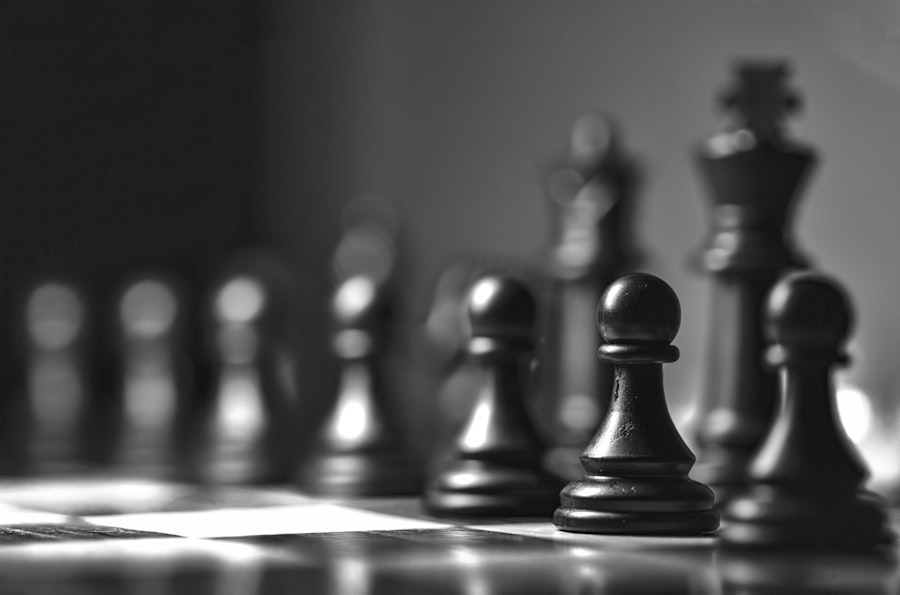Download links
How to install Mastering Chess: Strategies for Success APK?
1. Tap the downloaded Mastering Chess: Strategies for Success APK file.
2. Touch install.
3. Follow the steps on the screen.
Description
Chess is a two-player strategy board game that has captivated minds for centuries. The game is played on an 8×8 grid, known as a chessboard, where each player commands an army of 16 pieces: one king, one queen, two rooks, two knights, two bishops, and eight pawns. Each piece has its own unique movement capabilities, which contribute to the complexity and depth of the game.
The objective is to checkmate the opponent’s king, meaning the king is in a position to be captured and cannot escape. This fundamental goal drives all strategies and tactics employed throughout the game. Understanding the basic rules and movements of each piece is essential for any aspiring chess player.
The king moves one square in any direction, while the queen can move any number of squares in any direction. Rooks move horizontally or vertically, bishops move diagonally, knights have a unique L-shaped movement, and pawns move forward but capture diagonally. Additionally, there are special moves such as castling, en passant, and pawn promotion that add layers of strategy to the game.
Familiarity with these rules forms the foundation upon which players can build their skills and develop more advanced strategies.
Key Takeaways
- Understanding the basics of chess is crucial for beginners, including learning the movement of each piece and the objective of the game.
- Developing opening strategies is important for controlling the center of the board and preparing for the middle game.
- Mastering middle game tactics involves understanding key concepts such as pawn structure, piece activity, and creating a plan based on the position.
- Utilizing endgame techniques requires knowledge of basic checkmating patterns, pawn promotion, and king activity.
- Improving decision making and planning involves evaluating the position, calculating variations, and making long-term strategic plans.
Developing Opening Strategies
Popular Opening Strategies
One popular opening is the Ruy Lopez, which begins with 1.e4 e5 2.Nf3 Nc6 3.Bb5. This opening focuses on controlling the center while simultaneously putting pressure on the opponent’s knight. Another effective opening strategy is the Sicilian Defense, initiated by 1.e4 c5.
The Sicilian Defense: A Favorite Among Aggressive Players
This defense is favored by many players because it allows Black to counterattack and create imbalances in the position. The Sicilian Defense leads to rich tactical possibilities and can catch opponents off guard if they are unprepared.
Understanding Opening Strategies
Understanding various openings and their underlying principles enables players to choose strategies that align with their playing style, whether it be aggressive or more positional.
Mastering Middle Game Tactics

The middle game is where the complexities of chess truly unfold. After both players have developed their pieces and established their positions, tactical opportunities arise that can shift the balance of power on the board. Mastering middle game tactics involves recognizing patterns and combinations that can lead to material gain or checkmate.
Common tactics include forks, pins, skewers, and discovered attacks. For instance, a fork occurs when a single piece attacks two or more of the opponent’s pieces simultaneously, forcing them to choose which piece to save. In addition to recognizing tactical opportunities, players must also be adept at formulating plans based on their position.
This may involve creating weaknesses in the opponent’s pawn structure or coordinating pieces for an attack against the enemy king. A classic example is the concept of “outposts,” where knights are placed on strong squares that cannot be easily challenged by pawns. By understanding these tactical motifs and strategic concepts, players can navigate the middle game with greater confidence and effectiveness.
Utilizing Endgame Techniques
| Technique | Definition | Example |
|---|---|---|
| Opposition | Placing the king directly in front of the opponent’s king to restrict its movement | King on e4 and e6, with white to move |
| Zugzwang | Forcing the opponent to make a disadvantageous move | Black is in zugzwang and must make a move that worsens their position |
| Triangulation | Wasting a move to put the opponent in a worse position | King moves in a triangular pattern to lose a tempo |
The endgame is often considered one of the most critical phases of chess, as it can determine the outcome of a match. In this phase, fewer pieces remain on the board, and players must rely on precise calculation and technique to convert advantages into victories or salvage draws from inferior positions. Key endgame techniques include king and pawn endings, rook endings, and minor piece endings.
Each type requires a different approach and understanding of fundamental principles. For example, in king and pawn endings, the concept of opposition is paramount. The player whose king controls key squares can often dictate the outcome of the endgame.
Knowing how to promote a pawn while keeping the opponent’s king at bay is essential for success in these scenarios. Rook endings also demand careful maneuvering; players must understand how to use their rooks effectively to cut off the opponent’s king while supporting their own pawns’ advancement. By mastering these endgame techniques, players can significantly improve their chances of winning or drawing games that reach this critical phase.
Improving Decision Making and Planning
Effective decision-making is at the heart of successful chess play. Players must constantly evaluate their position, assess threats from their opponent, and formulate plans that align with their strategic goals. This process involves weighing various factors such as piece activity, pawn structure, king safety, and potential tactical opportunities.
Developing a systematic approach to decision-making can enhance a player’s ability to navigate complex positions. Planning in chess often involves setting short-term and long-term goals based on the current position. Short-term goals may include launching an attack on an exposed piece or creating weaknesses in the opponent’s pawn structure.
Long-term goals might involve improving piece coordination or preparing for an endgame scenario by simplifying the position through exchanges. By cultivating a mindset focused on both immediate tactics and overarching strategies, players can make more informed decisions that lead to favorable outcomes.
Enhancing Your Chess Skills through Practice and Study

Learning from the Masters
In addition to playing games, studying classic matches played by grandmasters can provide invaluable insights into advanced strategies and tactics.
Sharpening Your Skills
Furthermore, utilizing chess puzzles and tactical exercises can sharpen one’s ability to recognize patterns quickly during actual games.
Deepening Your Understanding
Books on chess theory and strategy also serve as excellent resources for deepening one’s understanding of various aspects of the game. Titles such as “My Great Predecessors” by Garry Kasparov or “Chess Fundamentals” by José Raúl Capablanca offer timeless wisdom that remains relevant regardless of a player’s current skill level.
If you are looking to improve your cognitive skills and critical thinking abilities, chess is a great game to start with. According to a recent article on Brainly, the homework app, playing chess can help enhance problem-solving skills and strategic thinking. It is a game that requires focus, patience, and the ability to anticipate your opponent’s moves. To learn more about the benefits of playing chess, check out the article here.
FAQs
What is chess?
Chess is a two-player strategy board game that is played on an 8×8 grid. It is one of the most popular and enduring games in the world, with a rich history dating back over a thousand years.
How is chess played?
Chess is played on a square board divided into 64 squares, with each player starting with 16 pieces: one king, one queen, two rooks, two knights, two bishops, and eight pawns. The objective of the game is to checkmate the opponent’s king, which means putting the king into a position where it cannot escape capture.
What are the basic rules of chess?
Each type of chess piece moves in a specific way: the king moves one square in any direction, the queen moves any number of squares in any direction, the rook moves any number of squares horizontally or vertically, the bishop moves any number of squares diagonally, the knight moves in an L-shape, and the pawn moves forward one square and captures diagonally. The game ends when a player’s king is in checkmate, or when a stalemate is reached.
What are the benefits of playing chess?
Chess has been shown to have numerous cognitive benefits, including improving memory, concentration, problem-solving skills, and strategic thinking. It is also a great way to improve patience and decision-making abilities.
What is the history of chess?
Chess is believed to have originated in India around the 6th century, and it spread to Persia, where it became known as “shatranj.” The game then spread to the Arab world and Europe, evolving into the modern game of chess that we know today.





